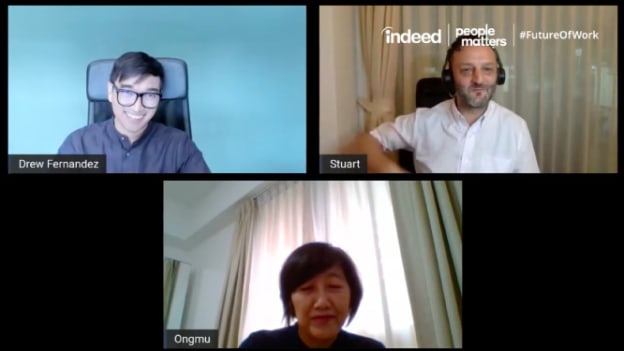The vision for Employer Brand Strategy in 2021

2020 was an unprecedented year in every way imaginable. For all workplaces across the world, there was a lot of change across all functions, and everybody scrambled to get all the pieces together. There was such a focus on getting immediate execution over the line that many other important pieces of the larger puzzle fell out of place. Protecting and managing the business bottom line became the top priority. With time, team engagement and culture became predominant issues, as productivity wavered and stabilized in turns.
Amidst all this, the overall vision of any company’s employer brand, although not directly operating, was still at play. With 2021 upon us, not only has employer brand strategy taken center stage but how to adapt its strategies to cater to the imminent future has become an important matter of discussion.
In a live virtual panel discussion, where PeopleMatters collaborated with Indeed, host Stuart Jones, regional account manager at Indeed, was joined by Drew Fernandez, Global Chief People Officer at the Coca-Cola Company, and Ongmu, the VP of HR in Greater China and Intercontinental regions. They both hold positions of immense responsibility in organizations that are functioning at a massive scale, and they shared their precious insights into the future of employer branding and what companies can expect going forward.
What’s a great place to work and how does it affect an employer’s brand in 2021?
Given that all previous boundaries for workplaces had to be redrawn, this fundamental question demands to be asked again. For Drew, there was no “concrete” understanding of an employer’s brand beyond what the associates and employees feel when they work for an organization. No matter how concretely you may want to project a brand image externally if your organization doesn’t communicate that feeling and emotion through its own actions and the way it orients itself towards its people, then that feeling won’t get projected outwards.
What did Coca-Cola do?
Coca-Cola took a simple three-pronged approach: clarify, simplify, and elevate. They clarified the nature of every associate or employee’s task, then they simplified what was possible to simplify in terms of their working conditions. Next, they elevated the brand experience to the highest degree possible by making sure that their employee promise was equal to their employee experience.
What did GSK do?
At GSK, Ongmu shared at GSK we have always focused on articulating the purpose of an organization and this is becoming even more important these days. With new difficulties coming in due to COVID, one thing that has kept employees attached to GSK is the fact that they understand what they are working for. In addition to this, the internal policies at GSK provide mental health support which further bolsters employees’ faith in the company. The way forward according to her is to offer help regarding physical, mental, and financial health, even as working conditions continue to be rearranged across the globe - for ultimately, it is the people that make an organization.
How can employers keep up with ever-changing leadership expectations?
Dynamic workplace engagement is one of the key ways forward, as it puts everything else into perspective. For large multinational corporations as well as small businesses alike, how engaged you can make an employee feel will contribute directly not just to the company’s profits but to its employer branding as well. Although there are advantages to having remote communications, one of the ways in which leadership can now adapt to the new conditions is by having extremely empathetic leaders, who can sense what another person is feeling without them having to explicitly mention it. Drew suggested that this may not just be a COVID-specific hiring requirement, but it will be necessary for all leadership positions moving forward. At another level, the things that worked earlier would continue to work today. A great example of this was given by Ongmu, who mentioned that GSK’s three-pronged approach to employee engagement - be you, feel good, keep growing - has worked well across the years and has continued to work well throughout the pandemic as well. Ultimately, operating with a human sensibility trumps all else, as people continue to choose communities over isolated individual effort.
Embracing the Future in 2021
Much has already been shared about the future that is to come in 2021, and much cannot be predicted. One of the things prominently discussed during the webcast was the fact that HR is not the only function responsible for employer branding. And yet, on another level, grassroots community work informs a different conception of organizational culture in such a way as to greatly influence the overall employer brand. For more insight into the discussion, and to have a greater appreciation for the amazing work that Drew and Ongmu have done.














